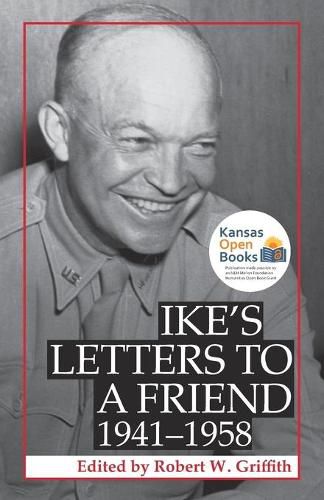Readings Newsletter
Become a Readings Member to make your shopping experience even easier.
Sign in or sign up for free!
You’re not far away from qualifying for FREE standard shipping within Australia
You’ve qualified for FREE standard shipping within Australia
The cart is loading…






Swede Hazlett was one of the people to whom I ‘opened up.’ -Dwight D. Eisenhower
Dwight D. Eisenhower and E. E. ( Swede ) Hazlett grew up together in Abilene, Kansas, and remained close, corresponding regularly from 1941 until Hazlett’s death in 1958. The letters collected in this volume, many of them surprisingly revealing, contain Eisenhower’s views on a wide range of diplomatic, military, and political issues. Taken together they constitute a remarkable inner history of Eisenhower’s public career.
Robert Griffith’s introductory essay is a masterful account of the Eisenhower-Hazlett relationship and of the insights provided by their correspondence for understanding the Eisenhower years. Griffith’s substantial headnotes give additional detail and context where necessary and provide a sense of narrative continuity to the correspondence.
The Eisenhower who emerges from these pages bears little resemblance to the bumbling caricature produced by journalists in the 1950s. But neither does he fit the role assigned to him by so many people today, whether liberal critics of the Cold War, conservative opponents of Democratic fiscal policy, or White House aides attempting to Eisenhowerize Ronald Reagan. He is, rather, a complex and multidimensional historical figure whom we must study, on his own terms, if we are to fully understand our recent past.
$9.00 standard shipping within Australia
FREE standard shipping within Australia for orders over $100.00
Express & International shipping calculated at checkout
Swede Hazlett was one of the people to whom I ‘opened up.’ -Dwight D. Eisenhower
Dwight D. Eisenhower and E. E. ( Swede ) Hazlett grew up together in Abilene, Kansas, and remained close, corresponding regularly from 1941 until Hazlett’s death in 1958. The letters collected in this volume, many of them surprisingly revealing, contain Eisenhower’s views on a wide range of diplomatic, military, and political issues. Taken together they constitute a remarkable inner history of Eisenhower’s public career.
Robert Griffith’s introductory essay is a masterful account of the Eisenhower-Hazlett relationship and of the insights provided by their correspondence for understanding the Eisenhower years. Griffith’s substantial headnotes give additional detail and context where necessary and provide a sense of narrative continuity to the correspondence.
The Eisenhower who emerges from these pages bears little resemblance to the bumbling caricature produced by journalists in the 1950s. But neither does he fit the role assigned to him by so many people today, whether liberal critics of the Cold War, conservative opponents of Democratic fiscal policy, or White House aides attempting to Eisenhowerize Ronald Reagan. He is, rather, a complex and multidimensional historical figure whom we must study, on his own terms, if we are to fully understand our recent past.